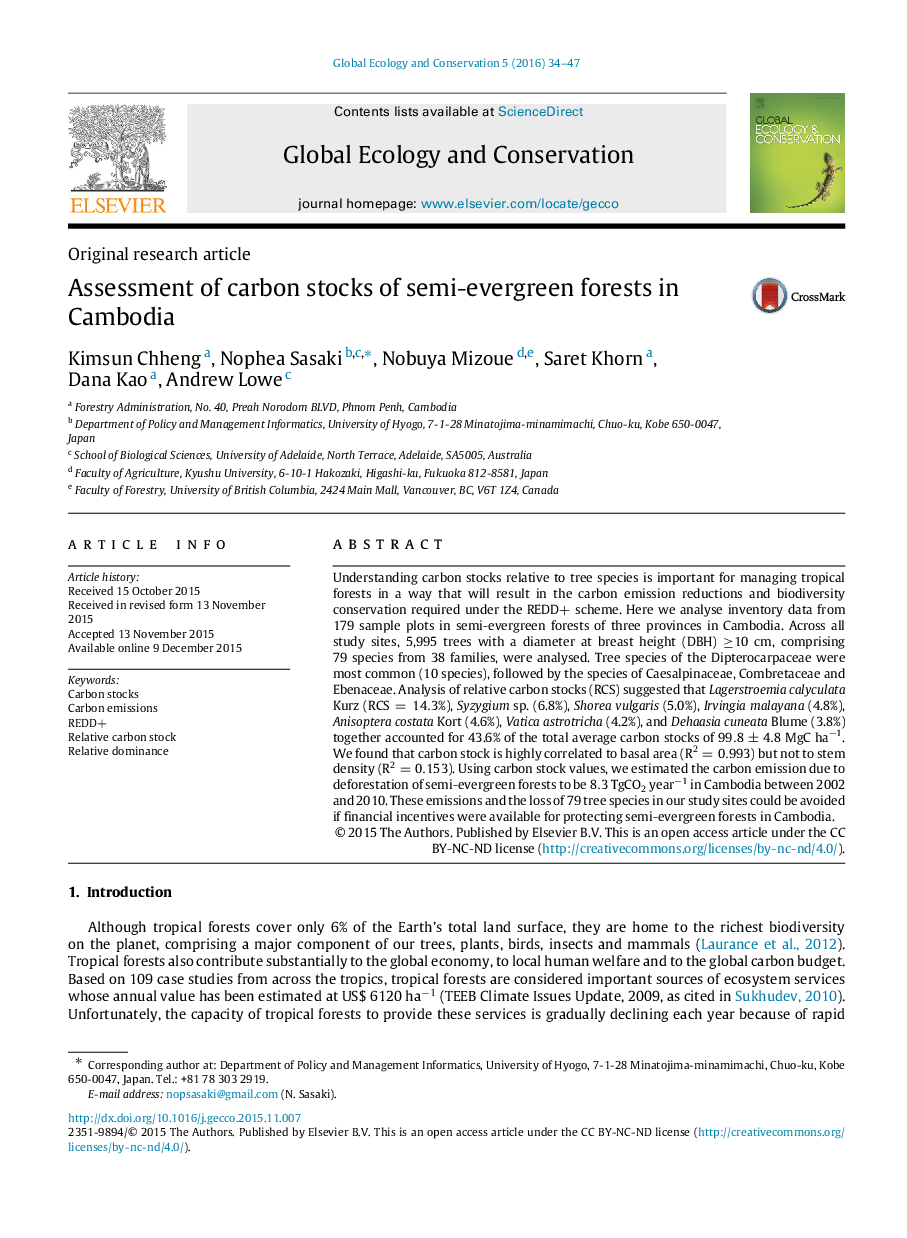| Article ID | Journal | Published Year | Pages | File Type |
|---|---|---|---|---|
| 4379707 | Global Ecology and Conservation | 2016 | 14 Pages |
Abstract
Understanding carbon stocks relative to tree species is important for managing tropical forests in a way that will result in the carbon emission reductions and biodiversity conservation required under the REDD+ scheme. Here we analyse inventory data from 179 sample plots in semi-evergreen forests of three provinces in Cambodia. Across all study sites, 5,995 trees with a diameter at breast height (DBH) â¥10 cm, comprising 79 species from 38 families, were analysed. Tree species of the Dipterocarpaceae were most common (10 species), followed by the species of Caesalpinaceae, Combretaceae and Ebenaceae. Analysis of relative carbon stocks (RCS) suggested that Lagerstroemia calyculata Kurz (RCS=14.3%), Syzygium sp. (6.8%), Shorea vulgaris (5.0%), Irvingia malayana (4.8%), Anisoptera costata Kort (4.6%), Vatica astrotricha (4.2%), and Dehaasia cuneata Blume (3.8%) together accounted for 43.6% of the total average carbon stocks of 99.8±4.8 MgC haâ1. We found that carbon stock is highly correlated to basal area (R2=0.993) but not to stem density (R2=0.153). Using carbon stock values, we estimated the carbon emission due to deforestation of semi-evergreen forests to be 8.3 TgCO2  yearâ1 in Cambodia between 2002 and 2010. These emissions and the loss of 79 tree species in our study sites could be avoided if financial incentives were available for protecting semi-evergreen forests in Cambodia.
Keywords
Related Topics
Life Sciences
Agricultural and Biological Sciences
Ecology, Evolution, Behavior and Systematics
Authors
Kimsun Chheng, Nophea Sasaki, Nobuya Mizoue, Saret Khorn, Dana Kao, Andrew Lowe,
